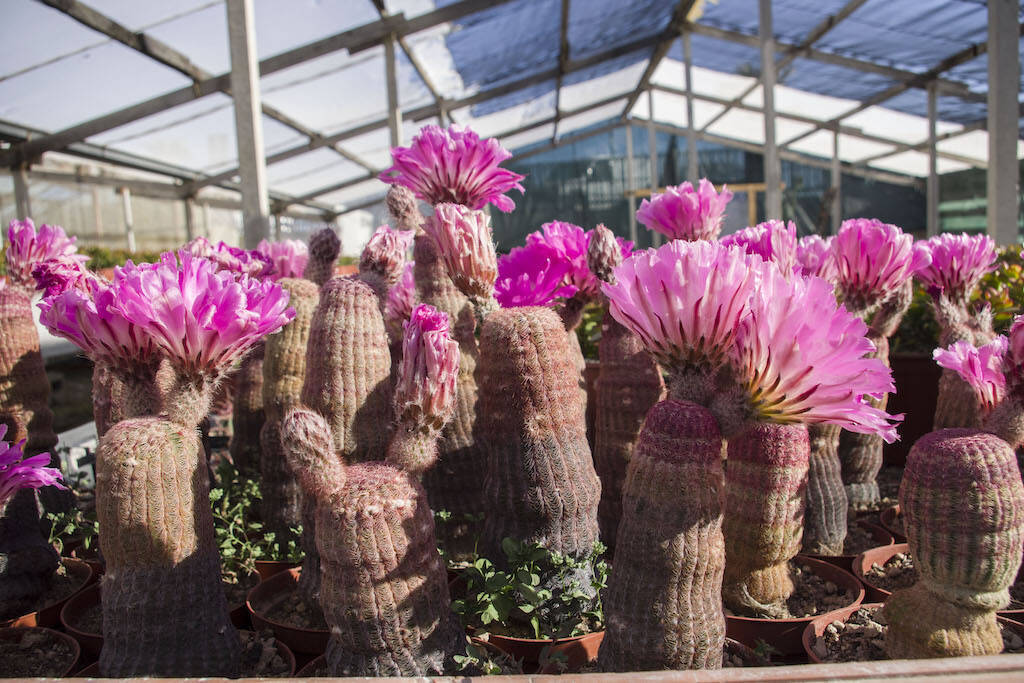On this page you will find some of the most deeply rooted beliefs and questions that are still widespread today among cactus and succulent plant growers. The statement in bold-red (effectively the questions) is followed by the answer, as always formulated on the basis of decades of cultivation. Each topic is treated briefly to give an immediate answer to the reader, but to further explore each topic there are internal links to the answer. Alternatively, the relevant articles on the site that answer your questions can be found in the relevant sections of the site. To find the articles on the site and give answers to your questions, choose a keyword (for example “pots”), enter it in the search engine found at the top of the site and scroll through the articles that will be proposed to you to choose the one that best suits you. But let’s now move on to some of the most widespread beliefs and questions in the world of cactophiles…
Cacti and succulents are the same thing.
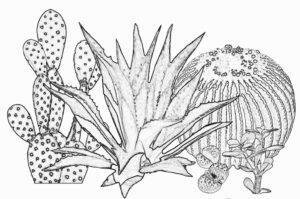 False. All plants capable of accumulating water reserves in the stem, leaves or roots are commonly called “succulent plants”. Cacti (Cactaceae) represent a well-defined botanical family, while the term “succulent plants” refers to various botanical families (Crassulaceae, Euphorbiaceae, Aizoaceae, Asclepiadaceae, etc.) whose species have adapted to resist longer periods or shorter periods of drought. All cacti are succulent plants but not all succulent plants are cacti. Think for example of Agaves, Aloes, Crassulas, Echeverias, Euphorbias, Lithops: they are all succulent plants belonging to different families, but none of these are cacti. Each family brings together genera and species and each genus has its own needs in terms of light, soil, irrigation and temperatures. If you want to delve deeper into the topic, you can find a specific article here.
False. All plants capable of accumulating water reserves in the stem, leaves or roots are commonly called “succulent plants”. Cacti (Cactaceae) represent a well-defined botanical family, while the term “succulent plants” refers to various botanical families (Crassulaceae, Euphorbiaceae, Aizoaceae, Asclepiadaceae, etc.) whose species have adapted to resist longer periods or shorter periods of drought. All cacti are succulent plants but not all succulent plants are cacti. Think for example of Agaves, Aloes, Crassulas, Echeverias, Euphorbias, Lithops: they are all succulent plants belonging to different families, but none of these are cacti. Each family brings together genera and species and each genus has its own needs in terms of light, soil, irrigation and temperatures. If you want to delve deeper into the topic, you can find a specific article here.
All cacti have thorns.
False. Many species of cacti have no real thorns. All Cactaceae are equipped with so-called “areoles” from which flowers and, in some cases, thorns or thick fluff are formed. However, many species and some genera are completely devoid of thorns (for example, Ariocarpus, Lophophora).
Cacti want tiny pots.
False. It’s one of the most frequently asked questions and the answer is often yes, but things aren’t exactly like that. Cacti and succulent plants in general require pots suited to the root system and proportionate to the stem. It is said that these plants need small pots because in large containers the substrate takes longer to dry. In principle this is true but if you use the correct substrate and if the plant is healthy, pots of the right size do not create any problems. It is essential that all pots have one or more drainage holes.
The pots must always be new.
False. The vases can easily be recycled. However, some clarifications are necessary: if a plant in the pot has died due to rot, the ideal thing is to throw away the pot, unless it is made of plastic. With plastic pots (both those in which a plant has died and those left over from a normal repotting) it is important to carry out a thorough cleaning, washing them thoroughly with water and bleach. If terracotta pots have contained a plant that has died due to rot, they should be thrown away. If valuable, they can be washed, sterilized and disinfected with alcohol and exposed to direct sunlight for several days. In other words, common terracotta pots (if they have not contained a dead plant due to rot) can be reused: simply wash them thoroughly with products such as bleach or bicarbonate, sterilize them with alcohol or disinfectant products (or boil them in water) and leave them in direct sunlight. for a few days.
Cacti and succulents are houseplants.
False. Although many succulents and some cacti are suitable for indoor cultivation, they are actually plants that need a lot of light (not necessarily direct sun) and a lot of air. A succulent plant grown at home can survive for a long time but will never be able to fully express its potential in terms of thorn production, flowering and compact shape of the stem.
Succulents should be watered very little.
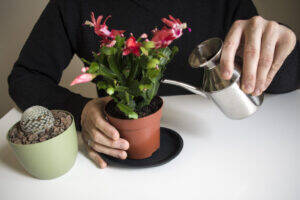 False. Cacti and most succulents require regular and abundant watering during the growing period, which generally runs from the end of March to mid-October. It is essential to water only when the substrate is dry and to avoid saucers. In winter, however, almost all these plants must be kept in cool places (or even in the cold as long as frost is avoided) and must never be watered. Naturally there are some exceptions, represented by African succulents, succulents native to Madagascar and cactaceae such as Melocactus, Discocactus and the so-called epiphytes (Schlumbergera, Epiphyllum, Rhipsalis, etc.) which can be moderately watered even in winter as long as they are kept warm. On irrigation you can consult the specific section of the site, at this link.
False. Cacti and most succulents require regular and abundant watering during the growing period, which generally runs from the end of March to mid-October. It is essential to water only when the substrate is dry and to avoid saucers. In winter, however, almost all these plants must be kept in cool places (or even in the cold as long as frost is avoided) and must never be watered. Naturally there are some exceptions, represented by African succulents, succulents native to Madagascar and cactaceae such as Melocactus, Discocactus and the so-called epiphytes (Schlumbergera, Epiphyllum, Rhipsalis, etc.) which can be moderately watered even in winter as long as they are kept warm. On irrigation you can consult the specific section of the site, at this link.
Cacti never or rarely flower.
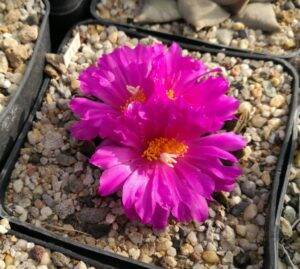 False. Another of the many incorrect questions/beliefs. All cacti, if of flowering age, flower regularly and profusely every year. To make them flourish, however, it is necessary to respect their needs and therefore ensure a period of stasis for these plants. Stasis corresponds to our winter, a period during which cacti (as well as many succulents) must be kept in a dry, cold place and in a perfectly dry substrate. Watering should therefore be suspended from mid-October to the end of March. At this link you will find an article dedicated to how to make cacti bloom.
False. Another of the many incorrect questions/beliefs. All cacti, if of flowering age, flower regularly and profusely every year. To make them flourish, however, it is necessary to respect their needs and therefore ensure a period of stasis for these plants. Stasis corresponds to our winter, a period during which cacti (as well as many succulents) must be kept in a dry, cold place and in a perfectly dry substrate. Watering should therefore be suspended from mid-October to the end of March. At this link you will find an article dedicated to how to make cacti bloom.
Succulents only flourish if fertilized abundantly.
False. Fertilizations are useful for the correct growth of the plant but for cacti and succulents two or three fertilizations in the growing season are sufficient. Flowering occurs, more than through fertilization, if the cold stasis period described in the point above is respected.
Any fertilizer is fine for succulents.
False. Cacti and succulents require minimum doses of nitrogen and high doses of phosphorus and potassium. For these plants, generic fertilizers (or so-called “balanced” ones) should not be used, but rather specific fertilizers for succulent plants. Using generic or too nitrogenous fertilizers will result in excessive growth of the plant, which will lose its characteristics (in cacti, for example, compact stem and strong thorns) and will become weaker in the face of possible parasitic attacks. Here you will find an article dedicated to the correct fertilizers for succulent plants.
Succulent plants fear the cold.
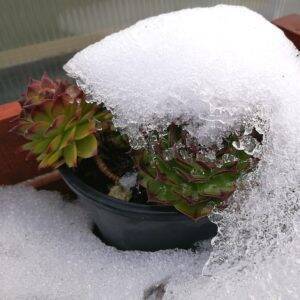 False. Cacti and many succulents come from sub-desert areas where temperature variations are very wide. In dry soil, during our winter, almost all cacti and many succulents can easily go to zero degrees; some even at several degrees below zero. The exceptions are epiphytic cacti and various succulents originating from warm areas such as Africa or Madagascar. Here you will find an article with two handbooks relating to the cold tolerance of succulents.
False. Cacti and many succulents come from sub-desert areas where temperature variations are very wide. In dry soil, during our winter, almost all cacti and many succulents can easily go to zero degrees; some even at several degrees below zero. The exceptions are epiphytic cacti and various succulents originating from warm areas such as Africa or Madagascar. Here you will find an article with two handbooks relating to the cold tolerance of succulents.
Succulents want full sun.
False (but up to a certain point). Many cacti and many succulents require direct sun for most of the day but the plants must be gradually accustomed to it starting from the end of March. Otherwise they will get burned. Many cacti and many succulents, however, want a lot of light but not direct sun. Here you will find an article with the light needs of various succulents.
Any substrate is fine for succulents, as long as it is draining.
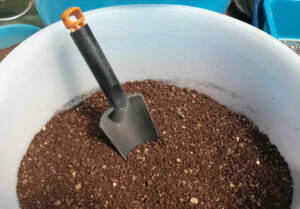 False. Each genus has its own needs but all succulents require a very draining substrate, composed at least half of inert materials such as pumice, gravel, sand, perlite, lapillus, etc. Cacti require at least 60% inerts, while succulents can also grow in a mix composed of half universal soil and half aggregate. In this section of the site you will find all the articles dedicated to substrates.
False. Each genus has its own needs but all succulents require a very draining substrate, composed at least half of inert materials such as pumice, gravel, sand, perlite, lapillus, etc. Cacti require at least 60% inerts, while succulents can also grow in a mix composed of half universal soil and half aggregate. In this section of the site you will find all the articles dedicated to substrates.
Succulent should only be watered from below.
False. They can be wetted from below but also from above, like rain does. The only succulent plants that it is best to avoid watering from above are those whose leaves are covered with a layer of wax (“pruina”), usually blue in color. In these cases, watering from above would remove the bloom and disfigure the aesthetic appearance of the plant (the classic example is Echeveria laui). When watering from above, however, it is important to pay attention to the flowers: not only do they get ruined but if they remain soaked in water for a long time, especially in the autumn months, they risk triggering rot. In this article you will find everything you need to know about how to water succulents.
Peat is harmful to succulents.
False. The point is the amount of peat used. Succulent plants in peat alone will tend to rot over time, but if high percentages of aggregates are added to the peat (e.g. 30% peat and 70% aggregates) the peat is excellent for the growth of succulents and cacti.
Expanded clay on the bottom should be avoided.
False. If you apply a light layer, just to cover the drainage holes or to reduce the capacity of the container in the case of a plant with few roots, the expanded clay does not cause any damage. This article explains in detail why expanded clay is not the “enemy” of your plants.
Succulent plants should never be repotted.
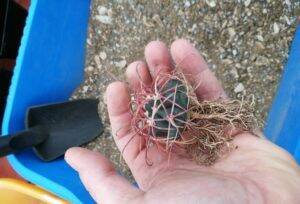 False. Like all plants, cacti and succulents must be repotted when the pot is now too small, or when the roots come out of the drainage holes or, again, when the plant has been in the same soil for years and therefore needs a fresh and nutritious substrate. Here you will find the section of the site dedicated to repotting.
False. Like all plants, cacti and succulents must be repotted when the pot is now too small, or when the roots come out of the drainage holes or, again, when the plant has been in the same soil for years and therefore needs a fresh and nutritious substrate. Here you will find the section of the site dedicated to repotting.
Succulents should be repotted every year.
False. It is repotted when necessary for the reasons explained in the previous question.
After repotting it is useful to water to settle the soil.
False. Cacti and succulents, after repotting, should be left in a shaded place and should absolutely not be watered for at least ten days, so that the roots damaged during repotting can heal. Otherwise you risk root rot. At this link you will find an article dedicated to this topic.
When repotting cacti and succulents, all the old soil must be removed.
False. This is one of many double-answer questions. If the plant is in a correct substrate, simply dig it up, free the roots a little and repot in the same type of substrate. If the plant is only in peat, then yes: the peat must be completely eliminated and the roots must be completely freed.
Succulent plants require constant treatments with pesticides.
False. Another of the most frequently asked questions and which is much debated. The best prevention against parasites, rot and diseases is correct cultivation. The treatments are reserved for plants with obvious problems (cochineal, rot, etc.) or should be limited for preventive purposes in two periods of the year: in spring (in this period it can be treated with Neem Oil) and in autumn (useful is some nebulization with copper oxychloride). Here you can reach the section of the site with all the articles dedicated to parasites and diseases.
Copper is always useful and can be given at any time.
False. Copper oxychloride is certainly useful but should only be administered when the plants are in stasis, i.e. in late autumn and winter.
Light from a well-exposed window is sufficient for all succulents.
False. It’s one of the most common questions: are cacti happy with the light from a window? The answer is variable: the light from a window facing south may be sufficient for some genera (especially epiphytes) but for many cacti with robust thorns (Ferocactus, Echinocactus, etc.) it does not ensure the right level of exposure and the spines produced these plants will be weaker and thinner than necessary.
Gravel and quartzite on the surface of the substrate prevent transpiration.
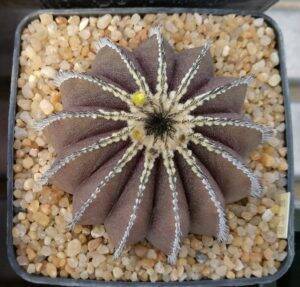
False. If the layer of gravel or quartzite is very limited (half a centimeter), it does not cause any problems and the substrate breathes regularly. If you prefer, it is possible to use porous materials such as pumice, lapillus, zeolite or akadama as mulch. However, these too should only be placed superficially, for a maximum thickness of half a centimeter.
SUBSCRIBE TO THE SITE – If you liked this article, subscribe to the site to have access to all the contents for one year or three months depending on the formula you choose. Here you will find terms and conditions.
SUBSCRIBE TO THE NEWSLETTER – If you want to receive the free newsletter every time new content is published (even if you have not subscribed to the site), fill in the fields at this link!
© The texts, videos, photos and graphic elaborations of the site “Il fiore tra le spine” are original material and are covered by copyright. It’s forbidden to reproduce them in any way.


